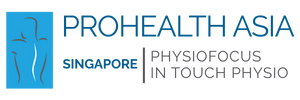Unlock Your Spine's Potential: Physiotherapy & The Schroth Method for Scoliosis Treatment
Dealing with a scoliosis diagnosis can be overwhelming, but the good news is that you have highly effective, non-surgical scoliosis treatment options available. One of the most successful approaches is a specialized form of physiotherapy known as the Schroth Method. This evidence-based technique is designed to stop curve progression, improve posture, and alleviate pain, making it a cornerstone of conservative scoliosis management for both adolescents and adults.
Understanding Scoliosis: More Than Just a Curve
Scoliosis is a three-dimensional (3D) spinal deformity where the spine not only curves to the side but also rotates. This twisting creates visible asymmetries, such as uneven shoulders or a rib hump.
Treatment goals for scoliosis are always focused on correcting this 3D alignment to prevent progression, especially during growth spurts, and to reduce its impact on daily life.
What is the Schroth Method? The Gold Standard in Scoliosis-Specific Exercise
The Schroth Method, developed by Katharina Schroth in Germany, is a highly individualized Physiotherapeutic Scoliosis-Specific Exercise (PSSE) program. Unlike general physical therapy, Schroth exercises are tailored to your unique spinal curve pattern to actively correct the deformity in all three planes: frontal, sagittal, and transverse.
This method teaches you how to consciously de-rotate, elongate, and stabilize your spine from the inside out.
Core Principles of Schroth Therapy:
3D Auto-Correction: This is the heart of the method. A certified Schroth therapist teaches you specific positions and movements to actively correct your posture and spinal rotation.
Rotational Angular Breathing (RAB): A specialized breathing technique used to reshape the rib cage and surrounding soft tissue by breathing into the concave (flatter) side of the curve.
Postural Awareness Training: You learn to identify and maintain your corrected posture in all Activities of Daily Living (ADLs), such as sitting, standing, and walking. This conscious effort is vital for long-term correction and stability.
Stabilization: Strengthening the core muscles and those around the spine to hold the corrected posture, ensuring the improvements last beyond the therapy session.
Key SEO Keywords: Schroth Method, Schroth exercises, physiotherapeutic scoliosis-specific exercise (PSSE), Rotational Angular Breathing, scoliosis physical therapist.
The Proven Benefits of Schroth Physiotherapy
Numerous studies and the latest guidelines from the International Society on Scoliosis Orthopaedic and Rehabilitation Treatment (SOSORT) recommend PSSE, including the Schroth Method, as an effective component of non-surgical care.
Halt Curve Progression
Helps stabilize and prevent the Cobb angle (the measurement of spinal curvature) from worsening, particularly in growing adolescents.
Improve Posture & Appearance
Visibly reduces trunk asymmetry, like rib or hip prominence, leading to improved body image and self-esteem.
Reduce Pain
Decreases chronic back pain often associated with muscle imbalances and spinal strain.
Enhance Lung Function
Rotational Angular Breathing techniques can improve vital capacity and respiratory function by mobilizing the chest wall.
Increase Body Awareness
Empowers patients with the skills for self-management of their condition for life.
Who Benefits from the Schroth Method?
Adolescents with Idiopathic Scoliosis (AIS), often in conjunction with bracing.
Adults with idiopathic or degenerative scoliosis to manage pain and prevent further progression.
Post-surgical patients seeking to improve function and maintain alignment.
Getting Started with Schroth Treatment
If you are seeking a proven, patient-led approach to scoliosis management, starting a Schroth program is the first step. Treatment is customized and involves working one-on-one with one of our certified Schroth physical therapists.

